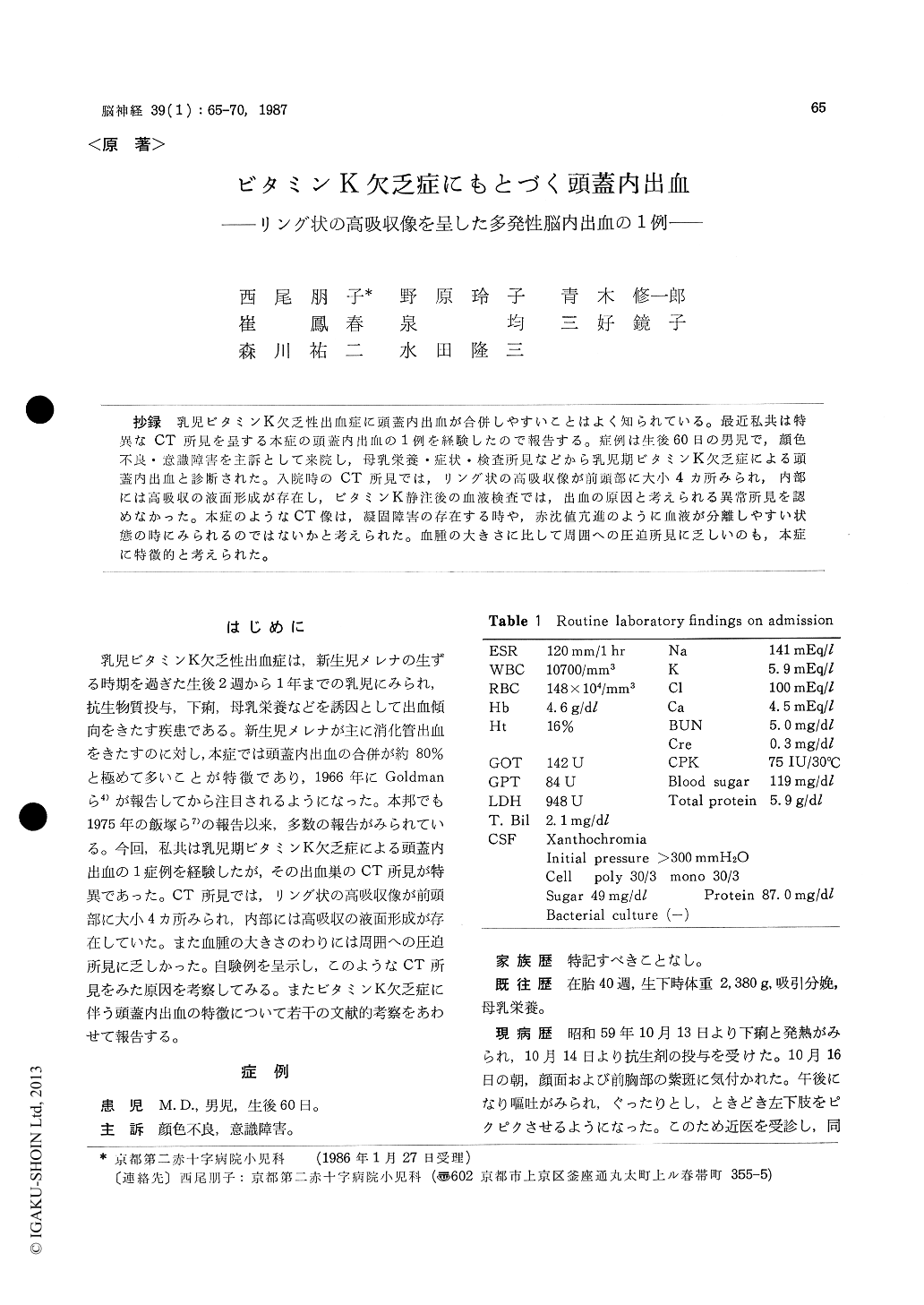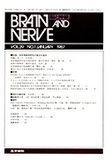Japanese
English
- 有料閲覧
- Abstract 文献概要
- 1ページ目 Look Inside
抄録 乳児ビタミンK欠乏性出血症に頭蓋内出血が合併しやすいことはよく知られている。最近私共は特異なCT所見を呈する本症の頭蓋内出血の1例を経験したので報告する。症例は生後60日の男児で,顔色不良・意識障害を主訴として来院し,母乳栄養・症状・検査所見などから乳児期ビタミンK欠乏症による頭蓋内出血と診断された。入院時のCT所見では,リング状の高吸収像が前頭部に大小4カ所みられ,内部には高吸収の液面形成が存在し,ビタミンK静注後の血液検査では,出血の原因と考えられる異常所見を認めなかった。本症のようなCT像は,凝固障害の存在する時や,赤沈値亢進のように血液が分離しやすい状態の時にみられるのではないかと考えられた。血腫の大きさに比して周囲への圧迫所見に乏しいのも,本症に特徴的と考えられた。
It is well known that vitamin K deficiency is an important cause of the spontaneous intracranial hemorrhage in infancy. A 60-day-old male infant with spontaneous intracerebral hematomas due to vitamin K deficiency was presented.
He was breast-fed. He had been medicated oral antibiotic agent for diarrhea and fever. Three days later he developed petechien, vomiting and twitching, and became drowsy. The blood studies showed anemia, and advance of ESR. He was administrated of vitamin K immediately. CT scan was showed four intracerebral hematomas with niveau, which were surrounded by high-density rings.
The ring-like figures were unique for this case. The reason may be next, we think. Under the states in which blood can separate easily with advance of ESR, blood clot would adhere to thewall of the hematomas. So these hematomas showed ring-like figures and had niveau in them. CT scan of this case was also interesting because there was little deviation in spite of the big hematomas. The reason of this may be that the brain of infancy is incomplete in myelination and contains much water, and that the possibility of bleeding due to vitamin K occurs slowly.
We examined 84 cases of intracranial hemor-rhage due to vitamin K deficiency from literatures, and they were all identified for the hemorrhage sites by CT scan. Subarachnoidal hemorrhage was in 72 cases (85.7%), subdural hemorrhage was in 41 cases (48.8%), intracerebral hematomas was in 36 cases (42.9%) and intraventricular hemorrhage was in 9 cases (10.7%). In 52 cases the CT findings were described. And 36 cases (69.2%) had more than two sites of hemorrhage. In 36 cases of in-tracerebral hematomas, 14 cases were able to confirm CT findings directly; 3 frontal lobe hematomas, 8 tempolar hematomas, 3 posterior hematoma and 2 intracerebellar hematomas were examined. Five cases had more than 2 intracerebral hematomas. The characteristics of intracranial hemorrhage due to vitamin K deficiency were that (1) subdural, subarachnoidal and intracerebral hemorrhage is common, (2) multiple bleeding is common, (3) within intracerebral hemorrhage temporal hema-toma is common, (4) deviation in CT scan is rare in spite of the big hematomas.

Copyright © 1987, Igaku-Shoin Ltd. All rights reserved.


